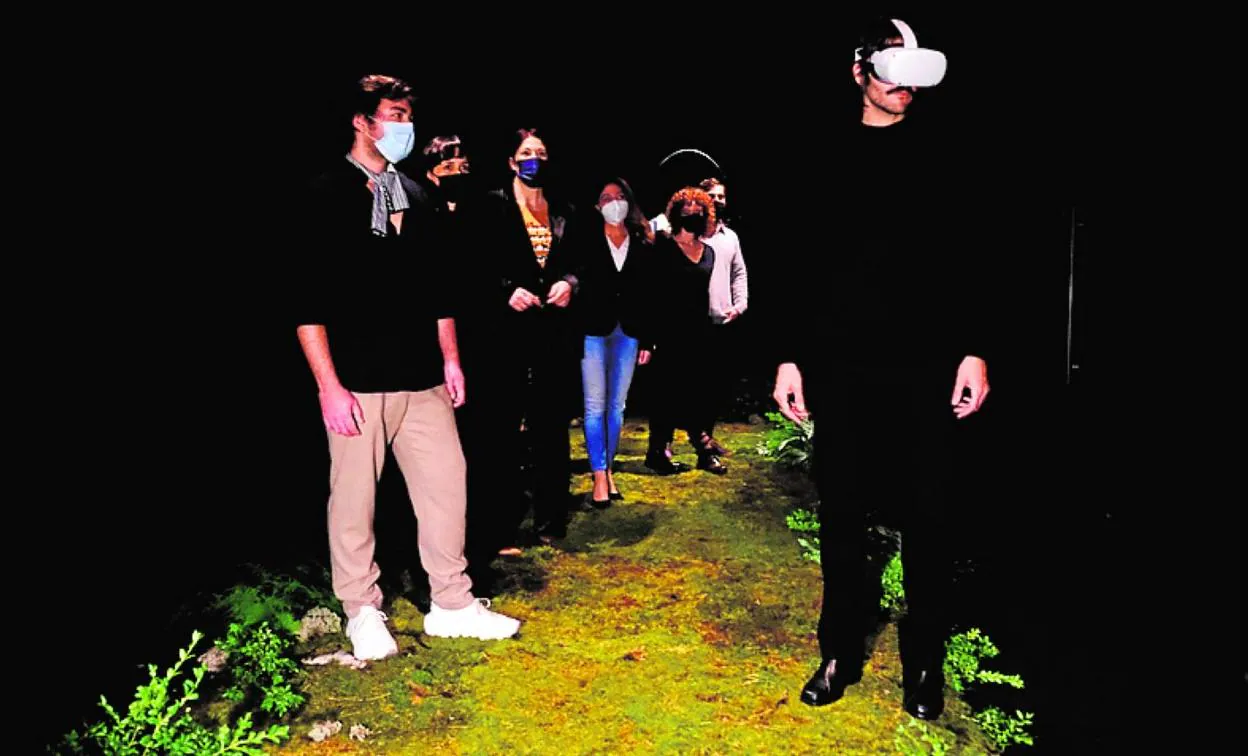Deep confusion
REVIEW ·
Here, there and everywhere, a "digitally enabled" revolution is rocking the art world. Are you ready?GEORGINA OLIVER
Friday, 25 February 2022, 13:19
True or false? Virtual or real? Sorry, wrong question. Double error. Step back and start over. In a pandemic-driven world, where "going viral" is no longer just a figure of speech, both of these questions are flawed, and current artistic developments reflect the impossibility of a yes/no answer.
However adverse we may be to mutating into mere avatars in an ever more multi-layered metaverse, parallel realities are the new normality. Zoom meetings were only the beginning; holograms are pushing the limits of virtuality.
Thyssen metaverse
Alternating between traditional thought processes (think slow writer; think pen and paper...) and artificial intelligence (think search engines; think key words...) comes naturally now, in all areas of activity. As I begin to take notes re: a state-of-the-art event spotted on the Museo Carmen Thyssen's website (viewing the video; downloading the PDF of the press release ...), the inevitable Google zig zag from one www to the next takes over. The five Ws (Who? What? When? Where? Why?) basic to classic reporting whisk me towards the Webosphere and beyond: to the depths of virtual reality, augmented reality, mixed reality (VR, AR, MR).
Who? When? Until Sunday 6 March, under the creative impetus of artist / photographer / art director, Ernesto Artillo (Malaga, 1987), in collaboration with Barcelona-based electronic music composer Susana Hernández aka Ylia, virtual model designer Alberto Martínez of Arte 3D, and immersive audio-visual technology specialists VREstudio.
What? Where? In the Thyssen's Sala Noble. An "audio-virtual" installation entitled Se Hizo Carne - an allusion to the Biblical verse (John 1: 14): "The word became flesh..." - invites museum-goers to ponder upon the impact of VR on their daily existences. How do we envisage the evolution of human identity as the "metaversal era" gains momentum?
Artillo's take on the "virtual people in a virtual world" we are fast becoming? Essentially that we are losing touch with our senses. The more time we spend scrolling social media apps on our mobile telephones, the less real-life relationships, the less eye contact. To say nothing of smell. His brainwave? To turn the metaverse - and its headsets - on its head. To use devices associated with gaming and co-teleworking, to conjure up a dream-like classical and contemporary art-infused meta experience. Drawing inspiration from the story of the "burning bush" from which God is said to have beckoned Moses declaring "I am that I am," "MC" Ernesto's multisensorial participatory happening is presented in a moss-scented environment evocative of fairy tale forests.
To dive in, or not?
The anticipation is killing me. Can you believe it? I'm writing about a concept that's nothing more than a construct of my imagination, encountered online. At the time of keyboarding this arty ad-lib, I'm not sure that I want to put my head and ears in the hands of the afore-mentioned apparently well-intentioned techies. Supposing this four-minute self-exploratory journey turns out to be the digital equivalent of a bad trip? What if I freak out?
Maybe I'm not ready for the future. Not "brave" enough. Put the blame on Huxley, or Jack Nicholson's Cuckoo's Nest performance... I've got the message. Se Hizo Carne is meant to be a poetic antidote to the chilling impersonality of machine age communication, yet the very prospect of donning a headset unnerves me.
Virtualspeak
Confusion reigns supreme. Orwellian memes are applied to everything from "Robodebt" to "deep fake". Even Donald Trump cashed in on the trend when he was banned from Twitter, with a mega-retweeted tirade: "We are living Orwell's 1984. Free-speech no longer exists in America."
Do YOU know anybody who has written or posted anything that "went viral"? Personally, I mean. I do. A former fellow Paris correspondent, Farah Nayeri, took cyberspace by storm with a New York Times headline: "Is It Time Gauguin Got Canceled?" Her controversial review of a Paul Gauguin blockbuster at London's National Portrait Gallery landed her a book contract.
The title - Takedown ("picked flicking through synonym generators") - is striking, and the resulting cultural page-turner may be as much of an art world game-changer as Lucy Lippard's seminal Six Years: The Dematerialization of the Art Object from 1966 to 1972. Much as Lippard put conceptualism on the map, Farah charts the rise of hashtag power (#MeToo, #BlackLivesMatter...) in the context of art history past and present.
What the author describes as "not a question of ticking diversity boxes, more like a fairness point" echoes the curatorial policy of Museo Thyssen's remarkable artistic director, Lourdes Moreno. The museum's next solo show (opening mid-March) - Juana Francés. Antología Íntima (1957-1985) - spotlights an "under-exposed" (female) pioneer of abstract art.
